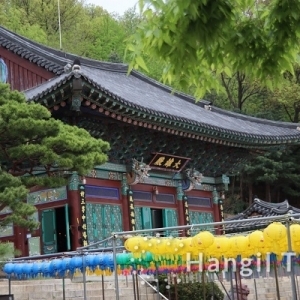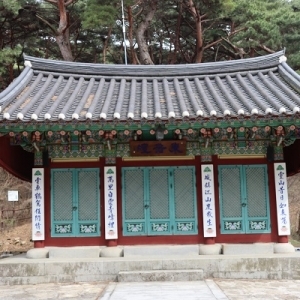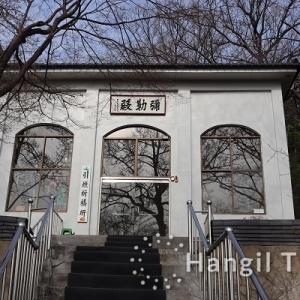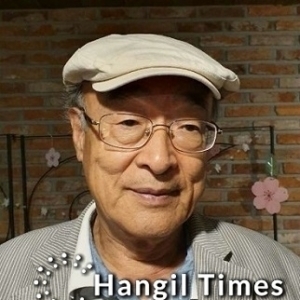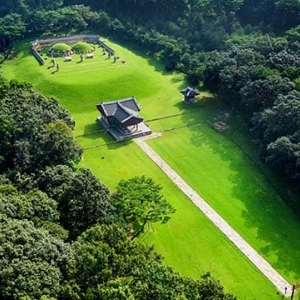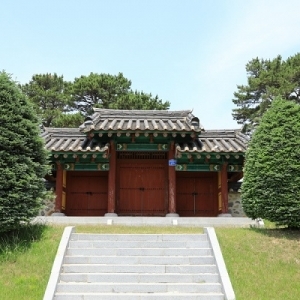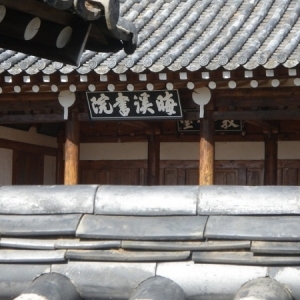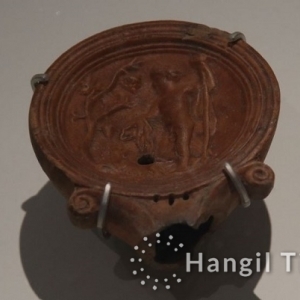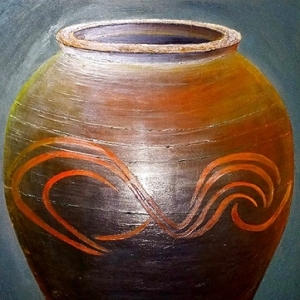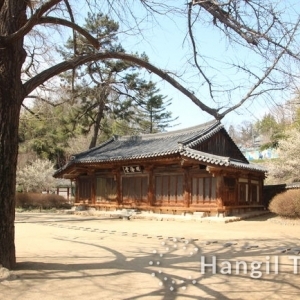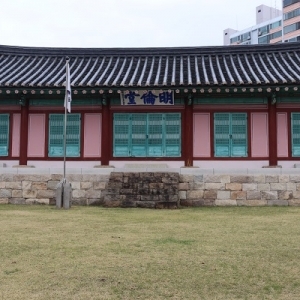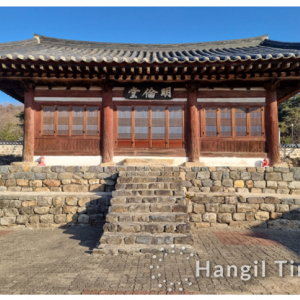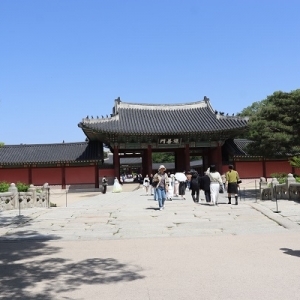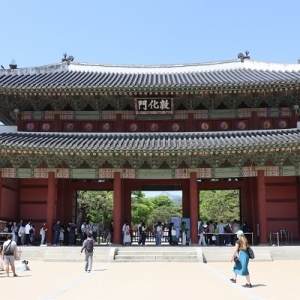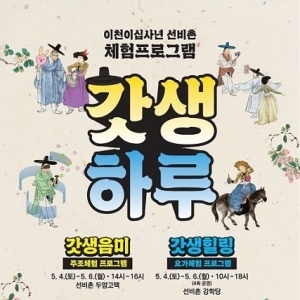 송광사 전경/문화재청 [박광준 기자] 전남 순천의 송광사는 승보사찰(僧寶寺刹)로서 매우 유서깊은 절이다.
송광사 전경/문화재청 [박광준 기자] 전남 순천의 송광사는 승보사찰(僧寶寺刹)로서 매우 유서깊은 절이다.
# 역사적 변천
명칭유래 ‘송광(松廣)’이라는 절 이름은 조계산의 옛 이름인 송광산(松廣山)에서 비롯된 것으로, 송광에 대한 몇 가지 해석이 있다.
먼저, 구전(口傳)해 내려오는 전설에는 이 산이 장차 ‘십팔공(十八公)이 배출돼 불법(佛法)을 널리[廣] 펼 훌륭한 장소’이기 때문에 송광이라 했다고 한다. 소나무 ‘송(松)’자를 ‘십팔공(十八(木)+公)’이라고 파자(破字)하고 ‘광(廣)’자를 불법광포(佛法廣布)의 뜻으로 해석한 데서 유래한다.

또다른 전설에는 보조국사(普照國師)가 이 절터를 잡을 때 나복산(羅逗山)에서 나무로 깎은 솔개[木鴟]를 날렸더니 국사전(國師殿)의 뒷등에 떨어져 앉았으므로 이 뒷등의 이름을 치락대(鴟落臺)라고 불렀다 한다. 이 이야기를 토대로 최남선(崔南善)은 송광의 뜻을 ‘솔갱이’(鴟의 방언)라고 풀었다.
끝으로, 김영수(金映遂)는 이 산에 ‘솔갱이(松의 방언)’가 가득 차 있었으므로 지방사람들이 이 산을 예로부터 ‘솔메’라고 해 왔다. 그래서 송광산이란 이름이 생긴 것으로 주장했다. 그의 주장에 의하면 송광의 ‘광(廣)’은 원래 언덕을 의미하는 ‘강(崗)’이었을 것이라고 한다.
승려 임석진(林錫珍)도 ‘송광사사지’를 저술하면서, 김영수의 해석을 가장 타당하다고 보았다. 산에 소나무를 많이 심어 바위가 드러나지 않게 한 데서 유래됐다고 한다.
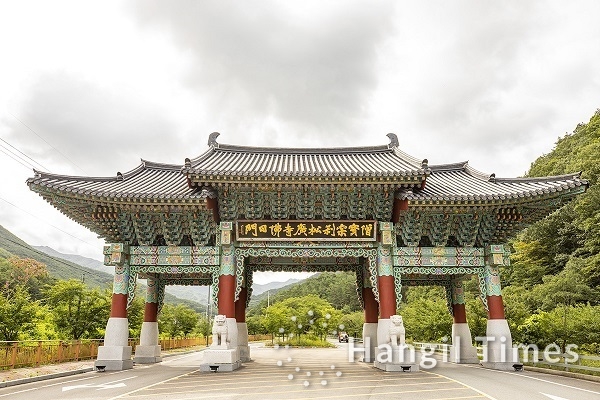
# 창건과 변천
송광사의 창건에 대한 정확한 자료는 없지만, ‘송광사사적비(松廣寺事蹟碑)’와 ‘보조국사비명(普照國師碑銘)’ 및 ‘승평속지(昇平續誌)’ 등을 보면, 신라 말기에 체징(體澄)에 의하여해 창건됐다. 그 당시에는 길상사(吉祥寺)라고 불렀고, 승려 수는 30명 내지 40명을 넘지 못하는 규모의 절이었다.
그 뒤 고려 인종 때의 석조(釋照)가 중창하려는 원(願)을 세우고 역부(役夫)를 소집하고 임목(林木)을 준비했으나, 완공하지 못한 채 세상을 떠났다. 그 뒤 얼마 동안 길상사는 거의 폐허화됐다. 50여 년을 지난 뒤 보조국사가 이곳으로 정혜사(定慧社)를 옮겨와 새 규모의 사찰로 발전했다. 보조국사가 송광사를 대수도도량으로 만들 수 있었던 연원은 1182년(명종 12) 개성 보제사(普濟寺)의 담선법회(談禪法會)에 참석해 수행결사(修行結社)를 약속한 것에서부터 시작된다.
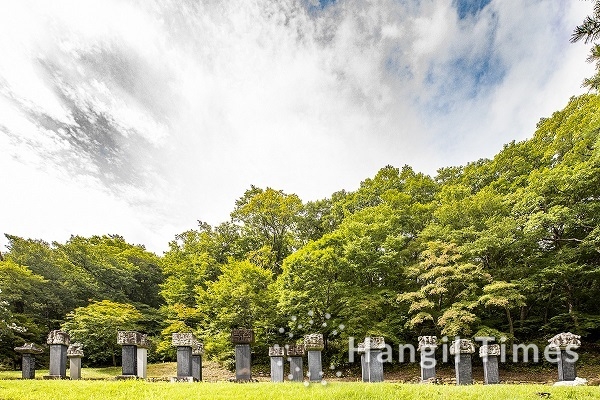
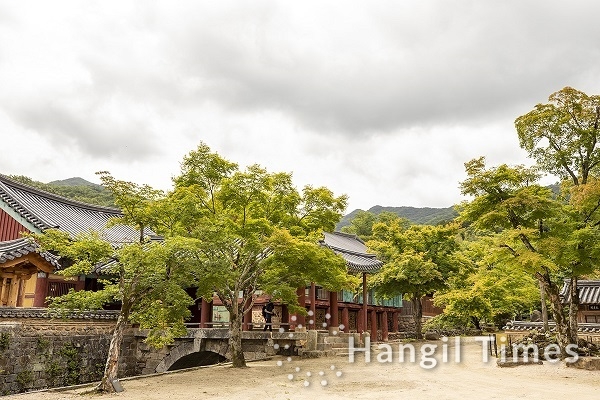
법회에 참석했던 승려들에게 도를 닦을 것을 간곡히 권유해, 뜻을 같이하는 동료들과 함께 맹문(盟文)을 지어 정혜결사(定慧結社)를 맺을 것을 기약했다. 그 뒤 10년이 지나, 정혜결사를 약속했던 사람 중의 한 사람인 득재(得才)가 팔공산 거조사(居祖寺)에 머물면서 1188년 봄에 결사를 기약했던 지기(知己)들을 모은 뒤 보조국사를 청했다. 그 뒤 1197년에 보조국사는 결사의 동지들과 함께 지리산 상무주암(上無住庵)에 들어가 3년 동안을 정진하다가 송광산 길상사로 옮겨와 자리를 잡았다.
이때부터 조선 초기까지를 조계산 수선사시대(修禪社時代)라 부른다. 이는 즉위하기 전부터 보조국사를 존경했던 희종(熙宗)이 송광산 길상사의 이름을 고쳐 조계산 수선사로 하도록 친히 글을 써서 제방(題榜)을 내렸기 때문이다. 1210년 보조국사가 입적하자 그의 고제자 혜심(慧諶)은 왕명에 의하여해 조계산 수선사의 제2세주가 됐다.

 사진출처-문화재청
사진출처-문화재청
그때부터 조선 초에 이르기까지 180여년 동안 15명의 국사가 이곳을 중심으로 수선사의 정신을 이어받아 우리나라 선종을 이끌어왔고, 이와 같은 탁월한 후계자들이 있었기 때문에 송광사는 승보사찰로 불려지게 된 것이다.
그러나 조선이 건국된 직후, 송광사 16번째의 국사에 해당하는 고봉화상(高峰和尙)이 이곳에 왔을 때에는 상당히 황폐한 상황에 있었다. 고봉은 1395년(태조 4) 불(佛).법(法).승(僧)의 전당(殿堂)을 중건했고, 1399년(정종 1) 왕은 수륙사(水陸社)를 설치하도록 윤지(綸旨)를 내렸다.

1420년(세종 2)에는 고봉의 뒤를 이어 중인(中印)이 당우도 증축했고, 절의 지위를 향상시키기 위해 정종 때에 설립됐던 수륙사를 철폐하고 선종(禪宗)으로 복귀시키는 행정적인 절차도 밟았다. 그 뒤 임진왜란과 정유재란으로 수각(水閣).임경당(臨鏡堂).보조암(普照庵).천자암(天子庵) 등이 소실됐을 뿐 아니라, 왜군의 노략질을 견디다 못한 승려들이 다른 사찰로 옮겨가거나 속가로 되돌아감에 따라 한때 폐사가 되다시피했다.
이에 응선(應善)은 1601년(선조 34) 수각을 1604년과 1606년.1608년에 천자암과 보조암.임경당을 차례로 중건한 뒤 당시 지리산에 있던 부휴(浮休)를 모셨다. 부휴는 1609년 제자 400여 명을 거느리고 이곳으로 옮겨와 조전(祖殿)과 동행랑(東行廊), 천왕문 등을 새로 짓고 기타 건물을 보수했다. 그 뒤 600여 명의 송광사 승려들이 부휴를 모시고 동안거(冬安居)를 성대히 보냄으로써 근세에 이르는 송광사의 명맥을 부활시켰다.

하지만 1842년(헌종 8) 3월 2일 낙하당(落霞堂)에서 일어난 화재로 대웅전을 비롯해 불우(佛宇) 5개 소, 승료(僧寮) 8옥(屋), 공사(公舍) 12곳 등 2,152칸이 소실됐고, 유물로는 대웅전의 삼존상(三尊像).경판 및 외향각(外香閣)의 유조(柚槽), 창고에 있던 모든 소장품이 소실됐다.
이듬해 기봉(奇峰)과 용운(龍雲)은 대웅전.명부전.응향각(凝香閣).법왕문(法王門) 등을 차례로 중건했다. 그런데 1856년(철종 7)까지 중창에 소요된 기간은 14년이었고, 경비와 총액은 1만 1,290냥(兩)에 달했다. 그 뒤 율암(栗庵)은 관의 협력을 얻어 1923년에서 1928년 사이에 용화당(龍華堂) 등 9채를 중수했고 명성각(明星閣) 등 7채를 중건했고, 사감고(寺監庫).장탄문(墻坦門)을 신축, 종각을 증축했다.

1948년 1월 여수반란사건과 6·25전쟁으로 조계산 일대에 무장공비들이 잠입하자, 공비 토벌을 위해 국군은 작전상 절 주변의 나무를 벌채했다. 이에 공비들은 절에 대한 압력을 가중시키다가 1951년 5월 대웅전 등 절의 중심부를 불태웠다. 1955년에서 1963년 사이에 취봉(翠峯)과 금당(錦堂)은 불탄 건물을 다시 창건 또는 중창했다.
1970년대에는 조실인 구산(九山)이 설법전.수선사.화엄전 등을 보수했고 조계총림(曹溪叢林)으로 부활해 수선사의 전통을 되살리는 데 심혈을 기울였다. 1983년부터 1990년에 이르기까지 주지 현호(玄虎)가 대웅보전.지장전.승보전(僧寶殿) 등 크고 작은 건물 20여 동을 새로 세우거나 옮겨 오늘에 이르고 있다./다음회에 계속-사진출처-문화재청, 윤정숙 기자
[영문] Songgwangsa Temple in Suncheon, Jeollanam-do, is a very historic temple as a Seungbo temple.
# a historical change
The name of the temple, Songgwang, originated from Songgwangsan Mountain, the old name of Jogyesan Mountain, and there are several interpretations of Songgwang.
First of all, according to the legend that has been handed down, this mountain is called Songgwang because it is a great place to spread illegal laws due to the production of the Eight Pallars in the future. It originated from the fact that the pine tree "Song" was called "Sipalgong+Gong" and the word "Gwang" was interpreted as an illegal mine.
Another legend says that when Bojo State Preceptor caught this temple site, he flew a wooden-cut pine dog from Naboksan Mountain, and it fell on the back of the Guksajeon Hall, so the back was called Chirakdae. Based on this story, Choi Nam-seon explained the meaning of Songgwang as "Solgangi."
Finally, Kim Young-soo said this mountain was filled with "Solgangi" (Dialect of Solgangi), so local people have called this mountain "Solme" since ancient times. So he claimed that the name Songgwangsan Mountain was created. According to his argument, Songgwang's "Gwang" may have originally been "Gang," meaning a hill.
Monk Lim Seok-jin also wrote Songgwangsa Temple Site, and saw Kim Young-soo's interpretation as the most valid. It is said that it originated from planting a lot of pine trees in the mountain to prevent rocks from being exposed.
# the foundation and transformation
Although there is no accurate data on the foundation of Songgwangsa Temple, it was founded by Chejing at the end of Silla when looking at Songgwangsa Temple Monument, Bojo State Preceptor Scream, and Seungpyeong Sokji. At that time, it was called Gilsangsa Temple, and the number of monks was less than 30 to 40.
After that, a stone sculpture during the Goryeo Dynasty built a circle to be rebuilt, convened a station, and prepared a forest tree, but died without completion. For some time after that, Gilsangsa Temple was almost devastated. After more than 50 years, Bojo State Preceptor moved Jeonghye Temple to this place and developed into a new temple. The origin of the State Preceptor Bojo's ability to make Songgwangsa Temple a large capital began in 1182 (the 12th year of King Myeongjong's reign) when he attended the Damsunbeophoe of Bojesa Temple in Kaesong and promised to hold a memorial service.
He earnestly encouraged the monks who attended the Buddhist service to practice their duties, and promised to build a blind gate with their colleagues to form a Jeonghyeyeolsa Temple. Ten years later, Deukjae, one of the people who promised Jeong Hye-ryeol, stayed in Geojosa Temple in Palgongsan Mountain, gathered the acquaintances who promised to die in the spring of 1188, and asked for a subsidiary governor. After that, in 1197, Bojo State Preceptor entered Sangmujuam in Jirisan Mountain with the comrades of the association and moved to Gilsangsa Temple in Songgwangsan Mountain after three years of devotion.
From this time to the early Joseon Dynasty, it is called the Jogyesan Suseonsa period. This is because Heejong, who respected Bojo State Preceptor even before he ascended the throne, personally wrote an embankment to change the name of Gilsangsa Temple in Songgwangsan Mountain to become Jogyesan Suseon. When Bojo State Preceptor passed away in 1210, his high pupil Hye-sim became the second-generation head of Haejogyesan Dansu Temple by royal order.
From then to the beginning of the Joseon Dynasty, 15 national officials have led the Zen sect of Korea, taking over the spirit of Suseonsa Temple around this place, and Songgwangsa Temple was called Seungbo Temple because of such excellent successors.
However, right after Joseon was founded, when Gobonghwasang, the 16th national temple of Songgwangsa Temple, came here, it was in a fairly devastated situation. Gobong rebuilt the hall of Buddhist monk in 1395 (the 4th year of King Taejo's reign), and in 1399 (the 1st year of King Jeongjong), the king gave a leap to install Suyuksa Temple.
In 1420 (the 2nd year of King Sejong's reign), Jungjung, who succeeded Gobong, also expanded Dangwoo, and administrative procedures were taken to abolish Sujeoksa Temple, which was established during King Jeongjong's reign, and return to Seonjong to improve the status of the temple. After that, the Japanese Invasion of Korea in 1592, and the Japanese Invasion of Korea in Jeongyu, were recognized.It is Imgyeongdang.Auxiliary cancer.Not only did Cheonjaam Hermitage disappear, but it was almost closed at one time as monks who could not endure the Japanese army's plunder moved to other temples or returned to a vulgar house.
As a result, Eungseon was inaugurated in 1601 (34th year of King Seonjo's reign) in 1604 and 1606.In 1608, Chunja and Auxiliary Cancer.After the reconstruction of Imgyeongdang in turn, Busheu, who was in Jirisan Mountain at that time, was enshrined. In 1609, Bushew moved to this place with about 400 disciples, built new Jojeon, Dongdongrang, and Cheonwangmun Gate, and repaired other buildings. After that, more than 600 monks of Songgwangsa Temple revived the reputation of Songgwangsa Temple, which reached modern times, by spending a great time with Dongangeo.
However, on March 2, 1842 (the 8th year of King Heonjong's reign), a fire at Parakdang destroyed 2,152 compartments, including Daeungjeon Hall, five unfortunate sites, eight monks, and 12 public buildings, and as relics, the Triad of Daeungjeon Hall.All the collections in the warehouse, the oil tank of the Gyeongpan and the Outward Angle, were lost.
The following year, Kibong and Yongun are Daeungjeon Hall.Myeongbujeon Hall. Eunghyanggak (香閣()Beopwangmun Gate was rebuilt one after another. However, until 1856 (the 7th year of King Cheoljong's reign), the reconstruction period was 14 years, and the expenses and total amount amounted to 11,290 nyang. After that, Yulam reconstructed nine houses, including Yonghwadang, between 1923 and 1928, and rebuilt seven houses, including Myeongseonggak, with the cooperation of the government office, and Sagamgo.Jangtanmun Gate was newly built and Jonggak Pavilion was expanded.
In January 1948, when armed guerrillas infiltrated the area of Jogyesan Mountain due to the Yeosu Rebellion and the Korean War, the South Korean military operatively cut down trees around the temple to eradicate them. Accordingly, the officials increased pressure on the temple and burned the center of the temple, including Daeungjeon Hall, in May 1951. Between 1955 and 1963, Chubong and Geumdang rebuilt or reconstructed the burned-out building.
In the 1970s, Gusan, the ancestral shrine, was a Seolbeopjeon.It repaired the Suseonsa Temple and Hwaeomjeon Hall, and revived as a Jogye Order, putting all its efforts into reviving the tradition of Suseonsa Temple. From 1983 to 1990, the chief monk Hyeon-ho was Daeungbojeon Hall.About 20 large and small buildings, such as Jijangjeon Hall and Seungbojeon Hall, have been newly built or moved to this day./Continue next time - Photo source - Cultural Heritage Administration, reporter Yoon Jung-sook
문체부, AI 등 디지털 K-컬처 육성에 올해 5천억 원 투입 [이승준 기자] 문화체육관광부가 올해 5천억 원을 투입해 디지털을 기반으로 하는 K-컬처 산업의 육성에 나서겠다고 밝혔다.문체부는 9일 '2024년 문화 디지털 혁신 협의회'에서 이런 방안을 확정했다고 밝혔다.육성 계획에 따라 98개 과제에 5,197억 원이 투입되는데, 여기엔 초거대 인공지능 AI나 디지털 플랫폼 같은 선도기술을 개발하는...

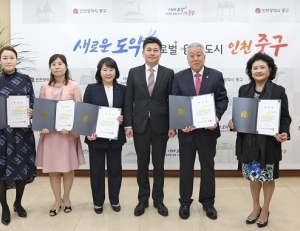 인천 중구, ‘제2기 마을공동체 만들기 위원회’ 위원 11명 위촉
인천 중구, ‘제2기 마을공동체 만들기 위원회’ 위원 11명 위촉
 용인예술과학대 마음건강센터, ‘스트레스 해소 집단상담(스트레스 OUT!)’ 프로그램 운영 실시
용인예술과학대 마음건강센터, ‘스트레스 해소 집단상담(스트레스 OUT!)’ 프로그램 운영 실시
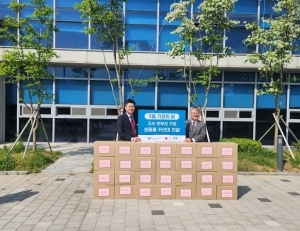 인천공항공사, ‘사랑의 꾸러미’ 전달...지역 사회에 온기 더하다
인천공항공사, ‘사랑의 꾸러미’ 전달...지역 사회에 온기 더하다
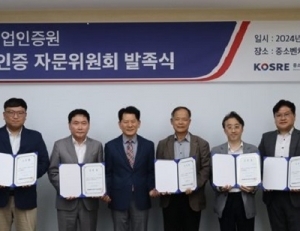 중소벤처기업인증원, 노사상생인증 자문위발족
중소벤처기업인증원, 노사상생인증 자문위발족
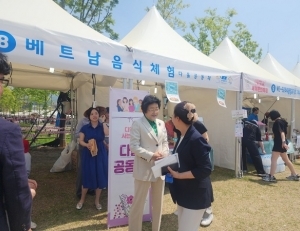 제17회 세계인의 날 기념, 제11회 이천세계문화축제 성료
제17회 세계인의 날 기념, 제11회 이천세계문화축제 성료
 한길타임즈 CG
한길타임즈 CG
 [신간] 좋은땅출판사 ‘공정채용 면접관 역량’ 출간
[신간] 좋은땅출판사 ‘공정채용 면접관 역량’ 출간
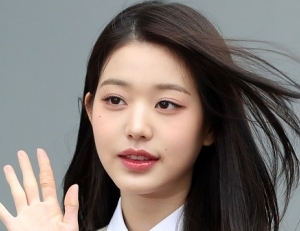 온라인서 장원영 신변 위협글..."경찰 수사.신변보호 요청"
온라인서 장원영 신변 위협글..."경찰 수사.신변보호 요청"
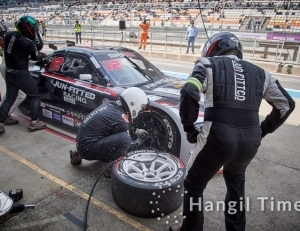 1년에 단 ‘한 번’ 열리는 피트 스톱 레이스...아시아 모터스포츠 카니발 개최
1년에 단 ‘한 번’ 열리는 피트 스톱 레이스...아시아 모터스포츠 카니발 개최
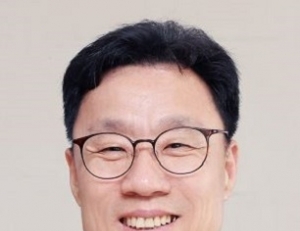 [독지기고] 아직도 영농부산물을 태우고 있습니까?
[독지기고] 아직도 영농부산물을 태우고 있습니까?
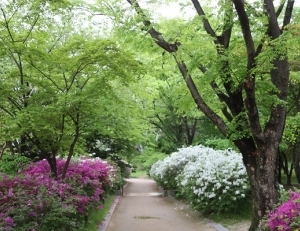 춘당지의 봄(2)
춘당지의 봄(2)

 목록으로
목록으로















